Yellowstone Flight
Added 6/6/2006 - Approx. 82 Total Flight Hours
Well, we just completed our 2nd major X/C family flight in the RV-10, and this plane is turning out to be a real beauty. I said to my wife when we got home... "Isn't it nice to go away from a flight knowing that you can't think of much more that you would want to buy to make your flight go nice." The gist of the statement is, I'm pretty darn happy with the way things have turned out, and the decisions we've made along the way. Every detail from the avionics choices, to the headsets, are working out just great. I'm even loving the GNS480 for some of it's neat features as a little backup nav/com. ;)As far as actual *flying* flights, this has got to be about my favorite so far. Being only about 755nm in length, it was a very easy short day flight, and the sights were much more beautiful along the way than the Indiana flatlands on the way to Florida. We were very "up in the air" about this trip, not knowing exactly what we wanted to do this weekend. In fact, as of Friday 1pm, I was still at work, and when I got home we still had to run the flight planning and decide on our destination. We had to check the weather in various directions, and we hadn't called a single FBO yet. Finally, I called Eagle Aviation in Spearfish, SD, and they assured me that there were hotels available that night. So, we decided to go, started to pack our stuff, and dropped off the mutt. After cleaning the bugs off the plane, we finally got airborne in mid-afternoon, and started out towards KCOD (Cody, WY), with a planned evening stop at KSPF (Spearfish, SD). I did have a surprise stop along the way... About 25 minutes into the flight, crusing on flight following through MSP class B, I suddenly was given the "5 minute warning", and overcome with those cold sweats.....and I'm sure you know what I mean. So I look down, knowing I just passed MIC airport, and knowing it's a while before I cross over top of another one, and quickly ask ATC for an immediate descent for a bodily function stop. They quickly replied that MIC was just off my tail, and I was immediately cleared to 3500' with a right turn to reverse course. Using the full advantage of fine-pitch on my prop, and pulling the power back, I expidited to 3500' and asked to continue and switch over to MIC tower. I was cleared right to a Left downwind, and given an immediate cleared to land, with same-freq. taxi to get to the FBO. Happy to have made it in record time, with time to spare, I decided to top the tanks as thanks to the FBO for keeping a clean bathroom. ;)
The weather turned out to be great on both legs to the destination. As we got midway across SD, I was impressed by the beauty of the seemingly barren landscape. It got very interesting as we started to approach the Black Hills. It had been probably over 25 years since I've been in these parts of the country, and I had no memories of how beautiful it was. Spearfish is a fantastic destination on it's own, but it also made a great stopover point. On the enroute cruise, I decided to give something a try....Lean Of Peak operation. I had never leaned out my engine past peak EGT before, and was curious as to how smoothly it would operate. My injectors aren't perfectly matched, but it sounded very good to me. I was level at 8500msl (higher than that in Density Altitude (DA)) and leaned it to where I knew I was about a min. of 50 degrees LOP EGT.
Previously I had been burning in the mid 12's and 13's gph, at about 155kts TAS or so. I don't push the engine quite as much as I probably could and should, but this seems to be a sweet spot for economy cruise for me. I then leaned it out LOP, and sure enough, I was still turning about the same 155kts TAS, but now I was burning more like 10.5 gph!!! Very good...but it gets better!!! With that airspeed, we were in the hotel with plenty of daylight left, and had time to relax, eat, and use the pool for a while.
** Note, I started a page at http://www.MyRV10.com/performance where I will list some of my recorded flight parameters, and will post any input I get from others. Hopefully this page can grow a bit, and finally mature into a page where you can go to get an idea of where other -10's are ending up on the performance scale, with various engine and prop combos, flown at various altitudes an conditions.
After getting a good night's rest, we piled in for the short ~246nm trip across the Southern end of the Bighorn mountains and into Cody, WY (KCOD). One thing that we did that was new on this trip was that we used our new PreciseFlight O2 system.
I'd never used O2 in flight before, and couldn't wait to crack out the cannulas and see how it went. I had previously purchased a Nonin SportStat PulseOx sensor, and on previous flights we all tested ourselves and found that yes, our Oxygen levels drop significantly during higher altitude flight. My wife and I easily drop into the 85-88% range, while the kids are still in the low 90's. Based on that, on some legs, it was just the 2 of us on Oxygen, but on the higher legs, the kids joined us. Surprisingly they did very well with it, and had no complaints about wearing the cannulas for the most part. I myself definitely start to feel "off" a bit when I'm at 8500' and higher for a while, and I felt it best that during the flight over the Bighorns, I was on my best for performance. I climbed up to 8500' msl for most of the enroute cruise, and 10,500' for the trip over the mountains.
Performance wise, I had wondered overnight if I had been leaning it far enough past peak EGT, so I pulled back the mixture a little further on this leg. I was even more rewarded this time. At 9500' msl, and running LOP, I was now cruising at about 153 kts TAS, but this time I was burning between 9.5 and 9.7 gph. This is about the same fuel burn as my Sundowner did, but in that plane I was flying more like 112 kts. So yeah, I'm pretty happy with this plane! My engine definitely ran cooler at LOP settings, with nice comfortable EGT's, and cooler than previous CHT's. It ran smoothly too, being an Aerosport-rebuilt, IO-540, with ported intake and flow-matched injectors. I may try to more perfectly flow-match the injectors and see if I can get my temps even closer together, but I'll need to wait until I have some log-analysis software to analyze my Chelton's logs. That should give me a great idea as to exactly which steps to take.
The rest of the flight we stayed at 10,500' until time for the descent, and the rest of the trip to KCOD went on uneventfully.
There are photos of the Family Yellowstone vacation below for anyone interested, but I'll continue on here with in-flight stuff, because it keeps getting better.
On the way home, I decided to cross the Bighorns a little higher, so we climbed initially to 11,500' and everyone went on Oxygen. This made the mountain crossing smooth, but to conserve O2, we decided to drop back to 9500' after crossing the mountains. Below I took some good screen shots of the various Chelton screens in flight during this segment of cruise. You can clearly see... 129 Kts IAS @ 9580', then on the next screen, 21.2 MP @ 2380rpm, running 9.5 GPH, with nice oil temps of 178 degrees F, EGT's 1356,1388,1352,1392,1324,1372 (I peak in the area of 1450), and comfortable CHT's of 360, 362, 336, 338, 322, and 331. Now THOSE are nice CHT's!!! Moving on to the next screen, I'm at 10,840 DA, with an OAT of 48F (cozy in the cabin), and getting a TAS of 153kts, with a Groundspeed of 172kts. You folks want numbers....how do you like THOSE numbers?!?! Do I need to explain any further why the -10 is a great plane for me? I know I was shy on the whole LOP thing, but being the cheap bastard that I am, I think I can get used to this type of efficiency. Now that I know it can be done, I'll be working on refining anything I can to make it as good as possible for my engine.
More Below...
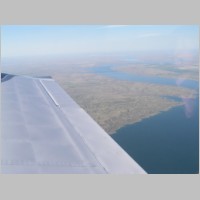
|
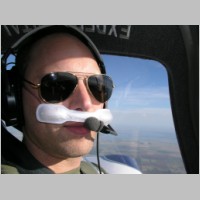
|
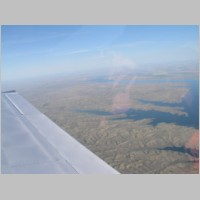
|
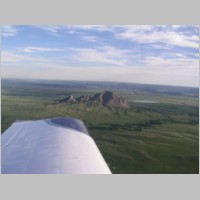
|
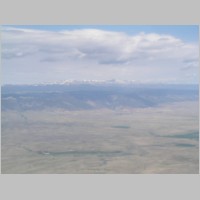
|
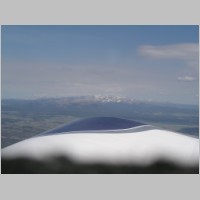
|
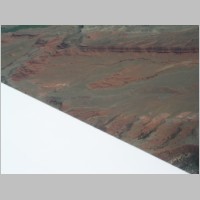
|
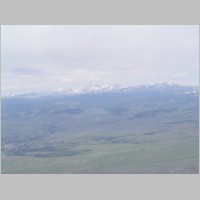
|
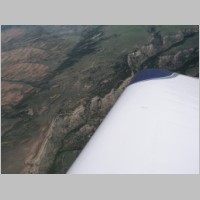
|
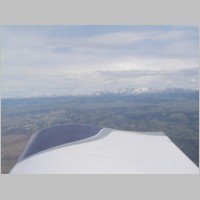
|
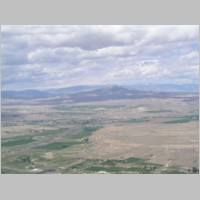
|
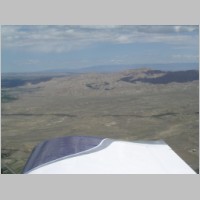
|
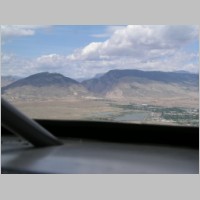
|
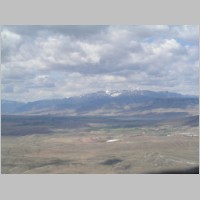
|
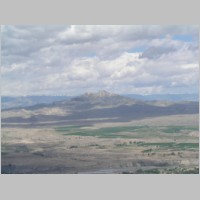
|
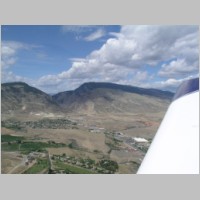
|
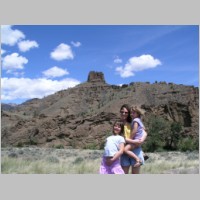
|
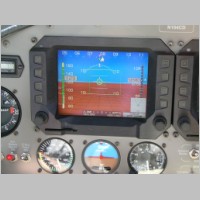
|
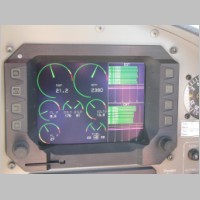
|
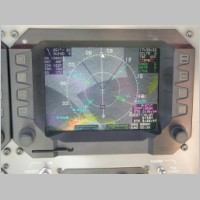
|
| Performance Specs, Anyone? | |||
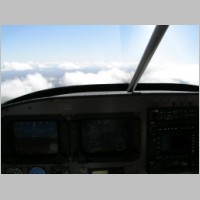
|
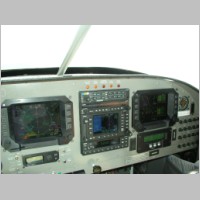
|
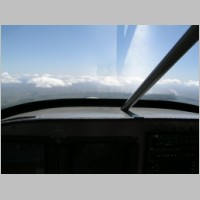
|
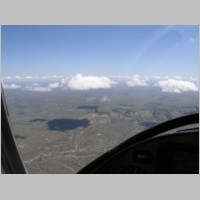
|
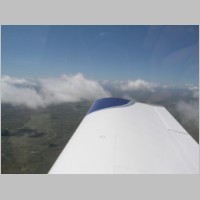
|
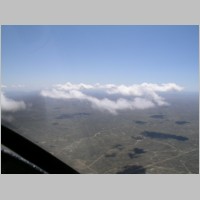
|
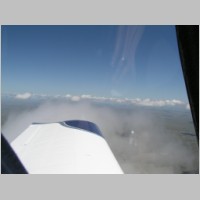
|
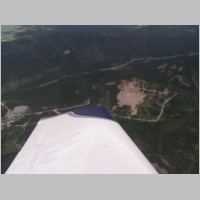
|
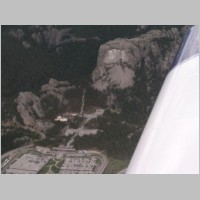
|
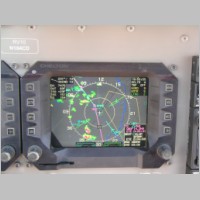
|
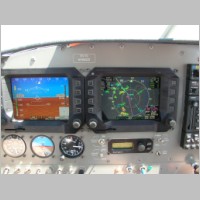
|
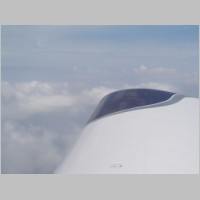
|
| The Value of WSI In-Flight | |||
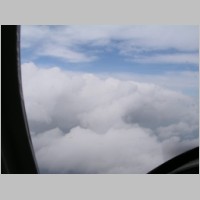
|
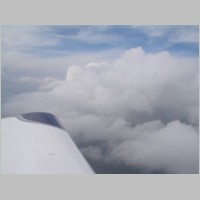
|
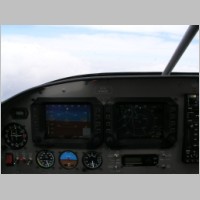
|
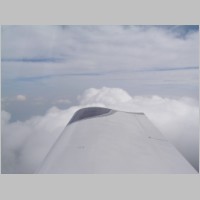
|
Weather Shots
So, I love the plane and the engine, but now the avionics really get their turn. The Chelton screens were phenomenal to use on an X/C like this. I won't even try to explain all the features, but on this trip, I spent much more time utilizing some of the things involved in the flight-planning section, and other areas. Then, on the way home, I knew the weather forecast was a bit "iffy" in the middle of the flight....but I had no idea that my WSI weather would turn out to be this mission-important.As we stopped for a break in mid-SD, I verified on the Chelton screen's WSI display that we indeed had a severe line of storms in the way of our return trip. If you look below, you'll see 3 images of what that weather looked like, at the time, and then each hour for 2 hours afterwards. The final shot is what it turned into as I was sitting at home checking my email. Up in the above photos, you'l see some screenshots of navigating around a small but fairly sever cell, and a bunch of other stuff.
The closest we came was that small cell just west of HON on the AOPA nexrad page, which is clearly visible on the in-flight WSI display on my Chelton, with both images from relatively the same timeframe. Without the WSI, I would have either been grounded for a while, constantly talking to Flightwatch, or recklessly flying into an area of known severe weather with no idea when I'd be screwed. The stuff I was flying around was just scattered small cottonballs, but even though all was nice, only 15 miles away was a good sized cell. I diverted more Southerly until I could cross Souix Falls area and pass just South of most everything, and then cranked it back North as much as I could to clear the weather, and not end up in the South end of MSP's class B. Once again, it was nice flying the -10, as we were really getting good groundspeeds, with Souix Falls only being 1:30 from home. The ride was pretty bumpy staying below the cottonballs at 5500', so we ended up climbing to 7500' where it was smooth sailing. You'll notice on the Chelton display that at 5500' I was at 135 kts IAS, but powered back and getting 151kts TAS at a DA of 7470'. I wish I had my fuel flow available to see, but I don't. I know I was not running LOP down low like this, and I know I was powered quite a ways back, because we were getting a bit beat up at 5500', and I tried to keep the speeds at least somewhat lower, closer to the Va of 125Kts just in case we hit some sudden jolts of turbulence.
Surprisingly, the family is plent comfortable in the bumps these days, and as long as there is a movie playing, I don't hear much from the back seat. ;)
So , from a flight perspective, this trip was fantastic. The plane worked great, and the avionics that I spent so much effort to perfect in my plan have proven their usefulness. I'm definitely one happy RV-10 builder!
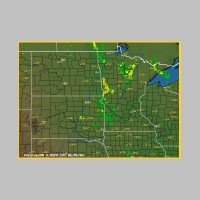
|
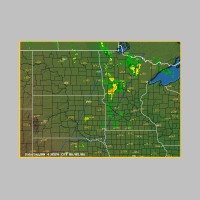
|
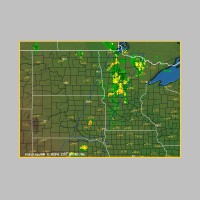
|
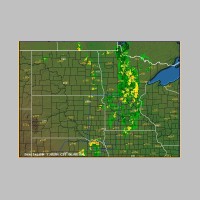
|
| Nexrad images of the weather we had to navigate around | |||
Family Vacation Shots
For the interested, I've included a handful of photos from the Yellowstone vacation. We didn't iniitially know if the kids would like a trip like this or not, at 5 and 7 years old, but the absolutely loved it. We saw tons of awesome scenery, with landscapes much different than anything they'd ever seen. We saw animals of many types, and had many new experiences.The kids were tickled that we could actually have a snowball fight on the Continental Divide, in June, in the summer, wearing shorts. They loved the sulphur smelling mud volcanoes, and springs, especially Old Faithful Geyser, and the fantastic angel spring in the Mammoth Springs area. We had a scenic drive from the NorthEast park entrance down to Cody that I'll never forget, and a vacation that overall will be a long-lasting memory for the whole family.
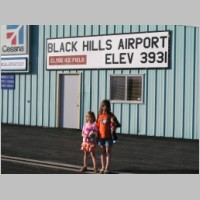
|
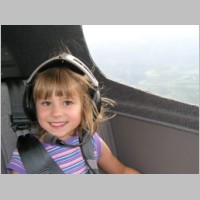
|

|
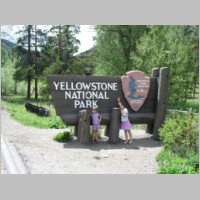
|
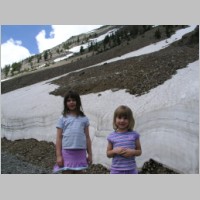
|
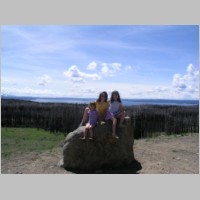
|
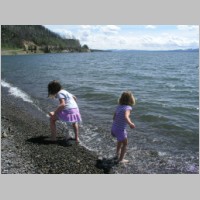
|
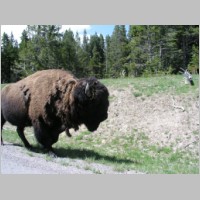
|
| Snow, in June?!? | |||
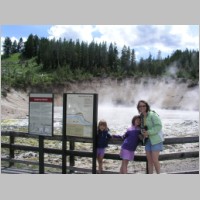
|
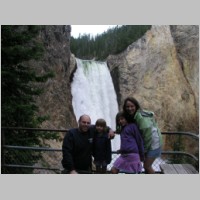
|
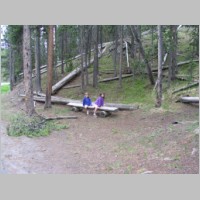
|
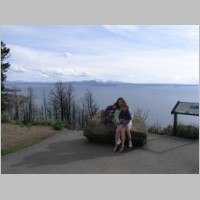
|
| Fred Flintstones Motorcycle | |||
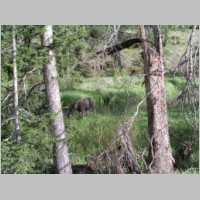
|
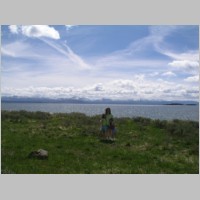
|
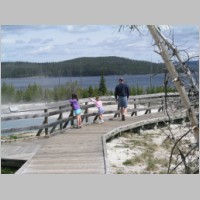
|
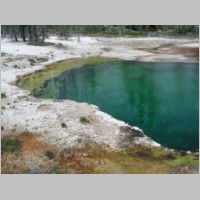
|
| Bulwinkle Moose | |||
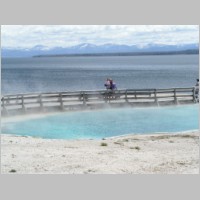
|
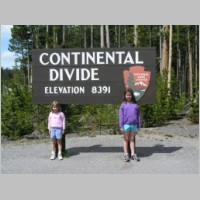
|
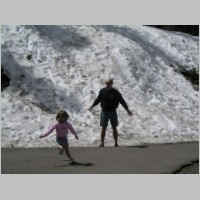
|
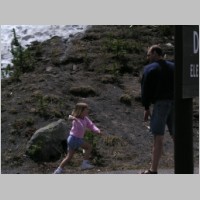
|
| Snowball Fight! | |||
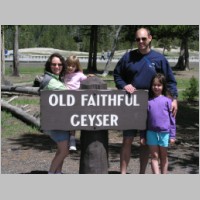
|
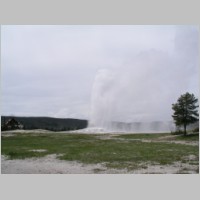
|
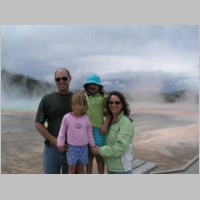
|
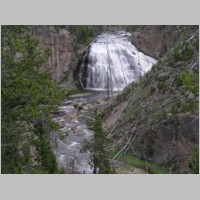
|
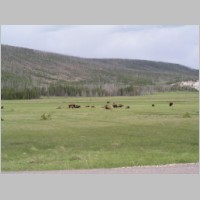
|
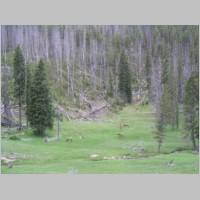
|
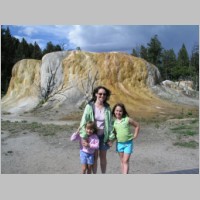
|
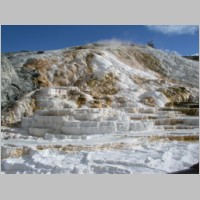
|
| Bison | Elk | Angel Spring | |
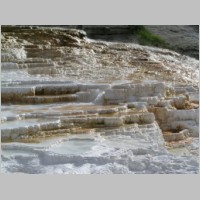
|
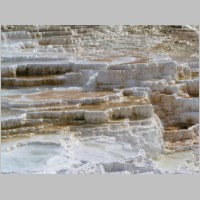
|
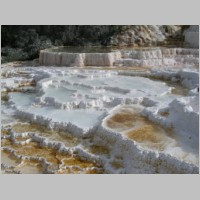
|
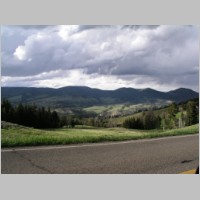
|
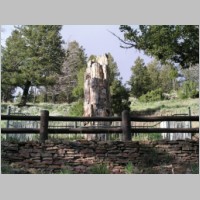
|
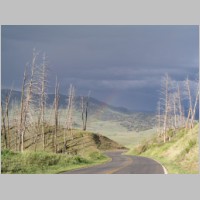
|
||
| Petrified Tree | Rainbow | ||